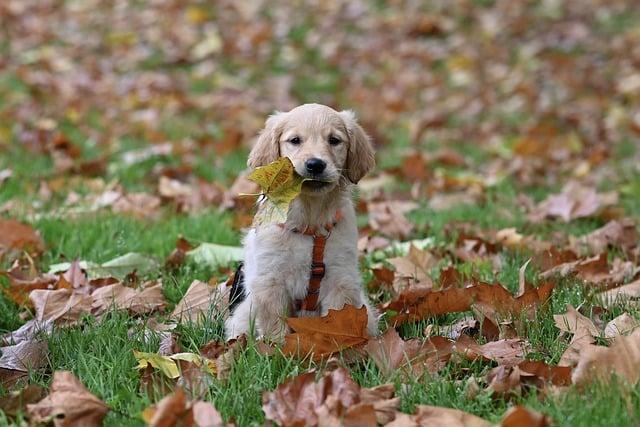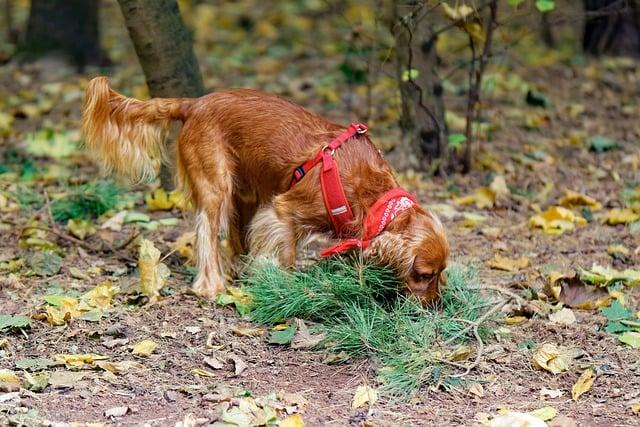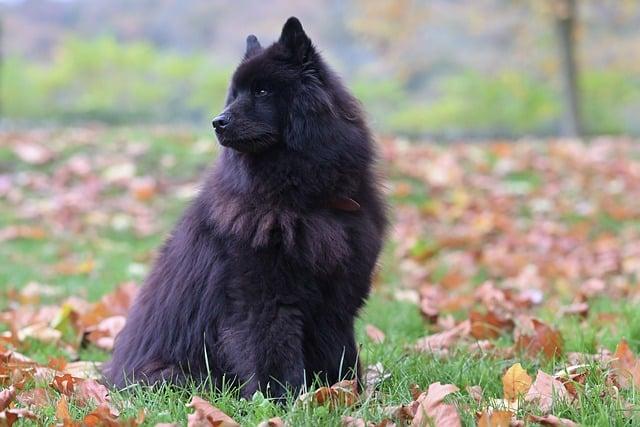In a cozy living room, a golden retriever named Max sat beside his owner, his tail wagging with excitement. Every time someone entered the room, Max greeted them with enthusiastic licks, leaving a trail of joy and laughter. Known for their affectionate nature, golden retrievers are among the breeds that lick the most. Their loving licks are not just a sign of affection; they also promote bonding and happiness. If you’re seeking a furry companion who will shower you with love and licks, a golden retriever might just be your perfect match!
Contents
- Understanding the Licking Behavior in Dogs
- Top Breeds Known for Excessive Licking
- Health Implications of Frequent Licking
- Effective Strategies to Manage Licking Habits
- Q&A
Understanding the Licking Behavior in Dogs
Licking is a natural behavior in dogs, often serving various purposes beyond mere affection. Understanding why certain breeds exhibit this behavior more frequently can provide insights into their temperament and needs. For many dogs, licking is a way to communicate, express anxiety, or even seek attention from their owners. This instinctual action can also be linked to their socialization and upbringing, where licking may have been reinforced as a positive interaction.
Some breeds are particularly known for their licking tendencies. **Labrador Retrievers**, for instance, are not only friendly and outgoing but also have a penchant for licking their owners as a sign of love and loyalty. Similarly, **Golden Retrievers** are renowned for their affectionate nature, often showering their families with slobbery kisses. Other breeds, such as **Beagles** and **Cavalier King Charles Spaniels**, are also known for their enthusiastic licking, which can be attributed to their playful and social dispositions.
However, excessive licking can sometimes indicate underlying issues. Dogs may lick due to stress, boredom, or even medical conditions such as allergies or skin irritations. It’s essential for dog owners to monitor their pets’ licking habits and consult with a veterinarian if the behavior seems excessive or compulsive. Understanding the context of licking can help differentiate between normal affection and potential health concerns.
Ultimately, recognizing the licking behavior in dogs can enhance the bond between pets and their owners. By understanding the reasons behind this behavior, owners can respond appropriately, ensuring their furry companions feel loved and secure. Whether it’s a gentle lick on the hand or a playful swipe across the face, each lick carries a message that reflects the unique personality of the dog.
Top Breeds Known for Excessive Licking
When it comes to canine companions, some breeds are notorious for their enthusiastic licking habits. This behavior can stem from various reasons, including affection, anxiety, or simply a natural inclination. Understanding which breeds are more prone to this behavior can help potential dog owners make informed decisions.
Among the top contenders, **Labrador Retrievers** stand out. Known for their friendly and outgoing nature, these dogs often express their love through licking. Their playful demeanor and strong bond with their families make them prone to showering their owners with slobbery affection. If you’re looking for a dog that will greet you with a wet kiss after a long day, a Labrador might be the perfect fit.
Another breed that frequently engages in excessive licking is the **Golden Retriever**. Similar to Labradors, Golden Retrievers are known for their loving and gentle temperament. Their eagerness to please often translates into licking, as they seek to show their devotion. This breed’s social nature means they thrive on interaction, and licking can be their way of connecting with their humans.
Additionally, **Boxers** are known for their playful and energetic personalities, which often leads to enthusiastic licking. Their affectionate nature makes them great companions, but their tendency to lick can sometimes be overwhelming. Boxers are known to express their excitement and love through this behavior, making them a delightful, albeit slobbery, addition to any household.
Health Implications of Frequent Licking
Frequent licking in dogs can lead to a variety of health implications that pet owners should be aware of. While occasional licking is a normal behavior, excessive licking can indicate underlying issues that may require attention. One of the most common concerns is the development of skin irritations or infections. Dogs that lick their paws or other body parts excessively can create hot spots, which are painful, inflamed areas that may require veterinary treatment.
Moreover, constant licking can result in dental problems. Dogs that frequently lick their lips or the air may be experiencing nausea or gastrointestinal discomfort. This behavior can lead to the accumulation of bacteria in the mouth, increasing the risk of periodontal disease. Regular dental check-ups and proper oral hygiene are essential to mitigate these risks and ensure your dog’s overall health.
Another significant concern is the potential for behavioral issues. Dogs that lick excessively may be experiencing anxiety or stress, which can manifest in compulsive behaviors. This can create a vicious cycle where the licking exacerbates their anxiety, leading to more licking. Identifying the root cause of this behavior is crucial, and consulting with a veterinarian or a professional dog trainer can provide valuable insights and solutions.
Lastly, frequent licking can also pose risks to the dog’s overall well-being. Ingesting foreign substances or irritants from their environment can lead to gastrointestinal upset or poisoning. Dogs are naturally curious and may lick surfaces that harbor harmful chemicals or pathogens. Therefore, monitoring your dog’s licking habits and ensuring a safe environment is vital to prevent potential health hazards.
Effective Strategies to Manage Licking Habits
Managing excessive licking in dogs requires a multifaceted approach that addresses both behavioral and environmental factors. One effective strategy is to identify the triggers that lead to licking. Observe your dog closely to determine if the licking is a response to stress, boredom, or even allergies. Keeping a journal of these behaviors can help pinpoint patterns and inform your next steps.
Another important tactic is to provide ample physical and mental stimulation. Dogs that are bored or under-exercised may resort to licking as a way to cope with their energy levels. Consider incorporating activities such as:
- Daily walks to expend energy and explore the environment.
- Interactive toys that challenge their minds and keep them engaged.
- Training sessions that reinforce positive behaviors and strengthen your bond.
In addition to physical activity, implementing a consistent routine can significantly reduce licking behaviors. Dogs thrive on predictability, and a structured schedule for feeding, playtime, and rest can help alleviate anxiety. Make sure to include designated quiet time where your dog can relax without distractions, which may help curb the urge to lick.
Lastly, consider consulting with a veterinarian or a professional dog trainer if licking persists despite your efforts. They can provide tailored advice and may recommend behavioral modification techniques or even medical interventions if necessary. Remember, addressing licking habits is not just about stopping the behavior; it’s about enhancing your dog’s overall well-being and happiness.
Q&A
-
Which dog breeds are known for excessive licking?
Some breeds are particularly prone to licking, including:
- Golden Retrievers
- Labrador Retrievers
- Beagles
- Boxers
These breeds often lick as a way to show affection or seek attention.
-
Why do dogs lick so much?
Dogs lick for various reasons, including:
- Affection: Licking is a natural way for dogs to express love.
- Grooming: Dogs lick themselves to keep clean.
- Stress Relief: Licking can be a calming behavior for anxious dogs.
- Exploration: Dogs use their tongues to explore their environment.
-
Is excessive licking a sign of a problem?
While licking is normal, excessive licking can indicate issues such as:
- Allergies: Skin irritations can lead to increased licking.
- Infections: Dogs may lick to soothe pain or discomfort.
- Behavioral Issues: Compulsive licking may require professional intervention.
Consult a veterinarian if you notice a sudden increase in licking.
-
How can I manage my dog’s licking behavior?
To reduce excessive licking, consider the following strategies:
- Provide Distractions: Engage your dog with toys and activities.
- Regular Exercise: Ensure your dog gets enough physical activity.
- Consult a Professional: Seek advice from a veterinarian or dog trainer if needed.
By addressing the underlying causes, you can help manage your dog’s licking behavior effectively.
while certain breeds may be more prone to licking, it’s essential to remember that each dog is unique. Understanding their behavior can enhance your bond. Choose wisely, and embrace the love that comes with those affectionate licks!

大家好,我是彼得潘,專業的手法身體治療師。我喜歡探索和研究各種主題,並透過與人工智慧的合作分享專業、實用、有趣的文章。我們定期進行人工審核,以確保內容的準確性。如果您發現文章中有任何不準確的地方,請隨時與我們聯繫,我們會及時糾正。您可以透過 [email protected] 與我們聯繫。



